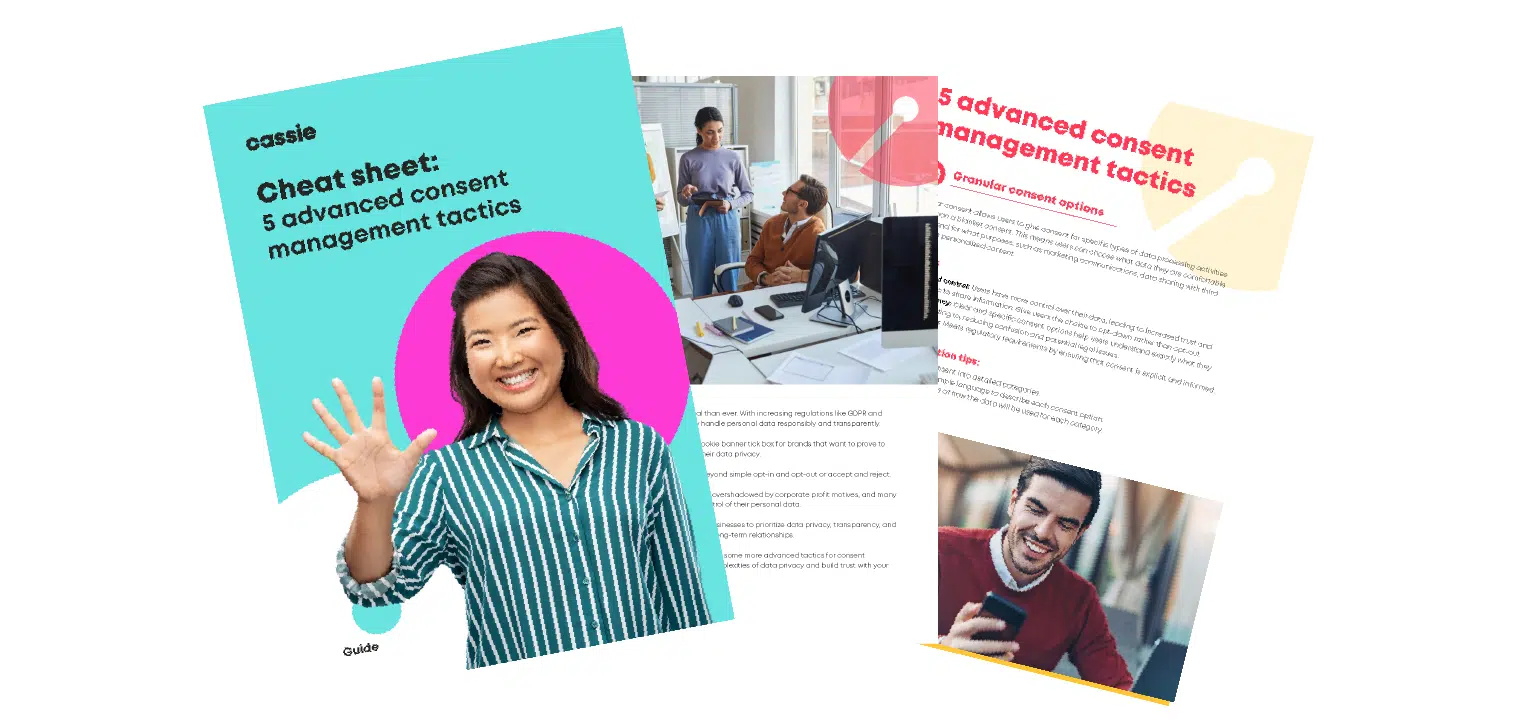5 ways to make consent a competitive advantage
Posted: September 18, 2024
It is not just privacy pros who advocate for customer trust as a competitive advantage. Experts in marketing, web design and customer experience, communications, consumer affairs, and governmental affairs all talk about the importance of trust in the business-customer relationship – and for good reason.
Annual Forrester research on the topic shows that a consumer’s higher level of trust in an organization links to the bottom line. Individuals who trust a company are more likely to be repeat customers, be willing to trial different products, and share personal data. Though there are some differences across regions, this research also suggests that consumer trust is not a once-and-done event. Rather, it results from a series of experiences, and if somehow that trust is broken, individuals will not only sever or limit ties with the organization themselves, but also warm off their family and friends.
If customer trust does, indeed, translate into competitive advantage, the million-dollar question (literally) is how to build that trust. Again, research from other fields can give insights. One such theory is that relational trust builds on four main attributes: Consistency, Compassion, Competence, and Communication. In other words, people, and by extension, organizations, earn trust by showing that they care, applying logical and predictable patterns in their behavior, clearly communicating, and then effectively implementing their promises.
These 4 Cs of trust translate well into the privacy space. A company that clearly expresses its practices, follows through on its promises, and holds itself to a high ethical standard related to personal data will earn trust. In fact, privacy well done is a differentiator, as it builds trust and, ultimately, reaps the bottom line benefits of that trust. Conversely, research has shown that privacy poorly done can have negative consequences. Consumers who do not trust an organization’s privacy practices will withhold information and avoid purchases.
The transparency and consent experiences that an organization presents to its customers are a critical way in which it demonstrates the consistency, compassion competence, and communication needed to build trust. Combined with the legal implications for consent in different geographies, transparency and consent are the most important investment that an organization can make related to personal data.
Most privacy laws address notice and consent requirements, though each region, country, and state/province have crafted requirements slightly differently. Some jurisdictions, such as some U.S. states and Canada, describe the topics that privacy notices must cover in some detail.
Additionally, most jurisdictions also describe the requirements of a valid consent – such as whether the consent must be an affirmative opt in, or whether an implicit opt out is acceptable. Like Canada, some jurisdictions require or allow for a different consent model depending on context. Other specific consent requirements depending on the geography include:
- Unbundled from other consents.
- Specific, described and scoped narrowly.
- Free from “dark patterns” – designs that influence a decision.
- Free from pressures of an unequal power relationship (like in the HR context).
- Ability to subsequently decline.
- Ability to receive basic services or benefits even with a “no” answer.
- Whether electronic signature is acceptable, or whether a paper-based “wet” signature is required.
- Whether the consent is valid in perpetuity, until the individual changes preferences, or whether the consent expires. Also, whether the organization can or must obtain a renewed consent after a period of time.
There is no doubt that creating adequate notices and excellent consent experiences is challenging. In addition to the complexity of handling global consent requirements, simple and clear customer experiences are hard to create. Also, there is a legitimate concern of the mental burden on data subjects to read, understand, and make decisions. Sometimes called “cognitive load,” decisions in any process can be points of friction, and friction in any experience can lead to drop offs and disengagement. Especially in jurisdictions or situations where consents must be unbundled, the mental burden of making decision after decision can take its toll on consumers, resulting in a negative experience, churn, and drop off.
That said, there are ways to create transparency and consent experiences that leverage the benefits of consent done well. Consider these five ways to make consent a competitive advantage.
Ask for consent in context
As human beings, we tend to make decisions in context of what is going on in our environments. Information becomes more meaningful when we understand how it fits into the larger picture. Clearly explaining the nature of the data collection and use at the right time, and the value of the consent from the data subject’s perspective is critical. Even more important is presenting that consent when the consent is pertinent, and the individual is actively involved in a related activity. The right timing can help reduce the mental burden of the consent. In other words, present the notice and consent Just in Time, when it makes sense in context with the individual’s goals at the time.
Spend time on transparency
Some people argue that writing short stories is much harder than writing novels, because the author must craft so much art and meaning into a smaller package. The same may be true for privacy notices. While it is important for a privacy notice to cover legally required topics, the less like a legal notice it sounds, the better. Less is more (if the notice covers all the needed information).
Communicate internally
As previously mentioned, follow-through is critical in building trust. All teams must clearly understand the promises all notices make, and how to fully implement consents. It takes cross functional communication to operationalize privacy notice commitments and consents.
Design for tomorrow
Especially when crafting a consent in a jurisdiction that requires specific, narrowly defined consents, it can be easy for an organization to ask for very granular consents based on current needs….and find tomorrow’s data use needs unmet. This can result in the need to get another consent from the user, which may be impractical or, at a minimum, degrade the customer experience. An organization that thinks ahead about future data use needs will be able to craft better consent language and scope, future proofing consent experiences.
Consider technology and testing
Technology in the form of a consent management platform can help manage complexity. Also, given that cookies and cookie consent experiences are part of the overall consent picture, it will be helpful to think about cookie banner/choice when considering the right consent management platform. Testing protocols, like those used to test other types of web experience designs and marketing campaigns, can help identify the most clear and transparent consent experiences. Artificial intelligence (AI) can even be a useful tool, as part of the consent management tool/platform itself, or in the design process for notices and consent.
Though hard to manage, a strong set of consent experiences not only assist in privacy compliance, but they can build customer trust and create a competitive advantage. Thinking of the “5 Cs” of trust building and the above 5 ways to make consent a competitive advantage will benefit the end user as well as the organization.


